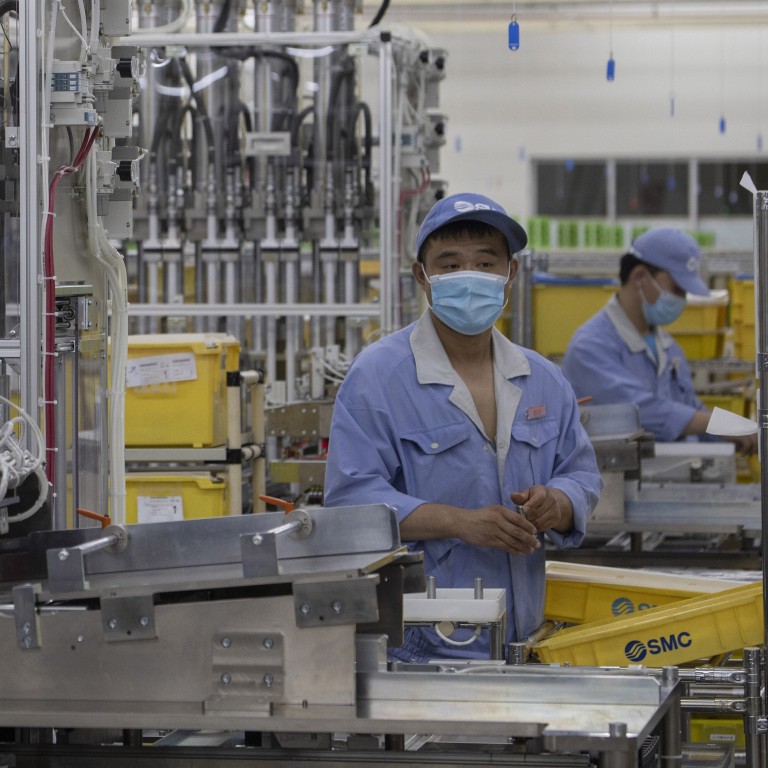
Coronavirus: China’s economic recovery path uncertain after mixed industrial production, retail sales data
- April’s figures released on Friday remained mixed, rekindling the debate over the outlook for China’s economic recovery
- Analysts debate V-shaped, U-shaped L-shaped and W-shaped recoveries for the world’s second largest economy
As China’s economy comes back to life following the coronavirus lockdowns, debate has intensified over how quickly growth will rebound.
The debate is often expressed in terms of the shape of the recovery, with a V-shaped recovery describing an economy that rebounds quickly. A U-shaped recovery is deep and more prolonged, while a L-shaped recovery is slower.
Retail sales, a measure of consumer purchases of goods, fell 7.5 per cent from a year earlier, although this weaker than expected recovery was an improvement on the 15.8 per cent decline in March.
Investment was also weaker than expected, falling 10.3 per cent in the January-April period from a year earlier, a modest improvement from the 16.1 per cent drop posted in the first three months of the year.
The strong manufacturing bounce indicates a V-shaped recovery, according to Peter Reynolds, partner and head of Greater China for management consulting firm Oliver Wyman, who also argued the recovery in general will be an aggregate blend of V, U and L-shapes recoveries.
“We expect multiple ‘mini-cycles’ to play out across the country by industry and region. It is critical to understand regional exposure, not just the overall exposure to China,” he said in a webinar on Friday.
China’s lower dependency on global exports will go a long way to reducing the potential impact of any global demand shock
He added that the risk of a broad global recession leading to a global demand-driven contraction could lead to a prolonged L-shaped economic recovery path for China, derailing any potential V or U-shaped recoveries.
But Ding Shuang, chief economist for Greater China and North Asia at Standard Chartered, said industrial production would likely dip again after the strong rebound in April as Chinese industry still relies heavily on foreign demand, which has diminished with the spread of the coronavirus.
“It is still a question whether we will see a strong rebound in the global economy in the third quarter after the great recession in the second quarter, as most countries are still in lockdown and scrambling to curb the spread of the virus, which poses great uncertainty for China’s recovery,” Ding said.
Dan Wang, an analyst from The Economist Intelligence Unit, said she expects to see a W-shaped recovery, a rebound in the second and third quarters followed by another dip in the fourth quarter because of a probable second wave of virus infections in China.
Faced with the unprecedented economic impact of the coronavirus outbreak, China has rolled out numerous measures to aid its sluggish economy, including an additional central bank credit line of 1 trillion yuan (US$140 billion) to small lenders and a further 1 trillion yuan in local government special purpose bonds for infrastructure projects.
“Even if there is a V-shaped recovery in the near future, China’s economy will converge to its potential growth path, which is to say, going downward, in the long run,” he predicted.

